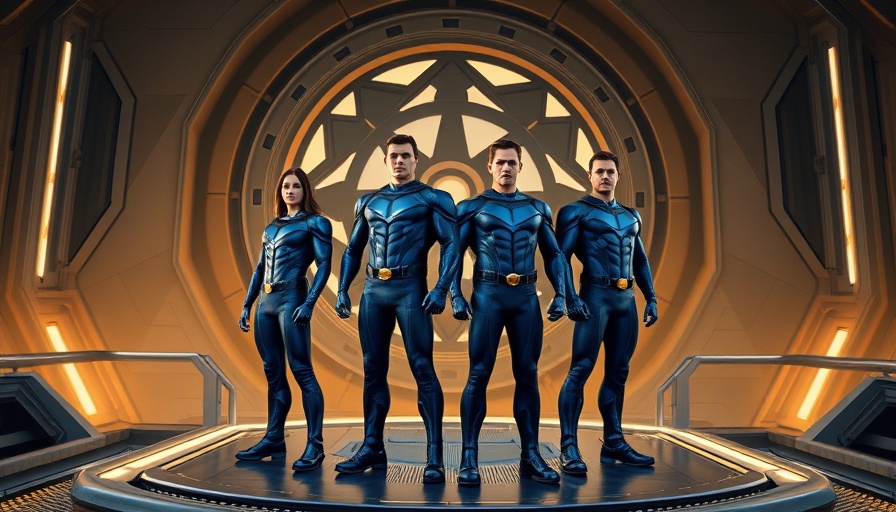
Marvel’s Fantastic Four: A Mixed Bag of Adventure
The recent Marvel Cinematic Universe (MCU) offering, The Fantastic Four: First Steps, launches audiences into a world already populated by its iconic superheroes. As Reed Richards, Sue Storm, Johnny Storm, and Ben Grimm tackle a cosmic threat from Galactus, the film appears at first glance to be another entry in the sprawling franchise. However, upon closer examination, the movie serves as a reminder that sometimes less can be more—a challenge that previous attempts at adapting this beloved comic properties faced as well.
A Step Back in Time with Mid-Century Modern Aesthetics
One of the film's most striking features is its visual style, which channels a Mid-Century Modern aesthetic. This choice establishes a nostalgic atmosphere yet leaves much to be desired in terms of character development. Director Matt Shakman, known for his work on WandaVision, infuses the movie with his unique flair but falls short of diving deep into the complex relationships among the characters. While effortlessly enjoyable, the film's pacing lacks the emotional depth needed to solidify a strong connection with its audience.
In Comparison: Pixar's The Incredibles
To compare The Fantastic Four to Pixar's masterpiece, The Incredibles, is inevitable. Both narratives center around super-powered families, yet the latter ultimately triumphs in character exploration, engaging storytelling, and emotional resonance. With the MCU struggling to find its footing following the astounding success of the Infinity Saga, it raises questions about how much any new release truly offers as innovation.
Independent Filmmaking: The Link to DIY Culture
Another notable release is House on Eden, which echoes the creative essence and gritty filmmaking style seen in The Blair Witch Project—celebrating the new era of DIY filmmaking. Its ability to connect with the audience on a more personal level highlights the ongoing struggle of independent creators in a movie landscape dominated by big budgets and commercial interests.
Current Impact on the Film Industry
The challenges highlighted within these new releases reflect broader trends in the film industry. The reliance on established franchises demonstrates a fear of risk-taking, limiting innovation but assuring a return on investment. This dynamic leaves audiences craving fresh and diverse stories while navigating through safe, familiar plots and characters.
Final Thoughts: The Future of Film Choices
As we dive into the options available in theaters this July 25, the eclectic mix of superhero spectacle and indie narrative reveals the current cinematic landscape's complexity. While many viewers will undoubtedly flock to experience the latest Marvel offering, a deeper contemplation on how films can connect on a relational level will ultimately guide audiences toward making informed choices in their film-going experiences.
 Add Row
Add Row  Add
Add 




Write A Comment